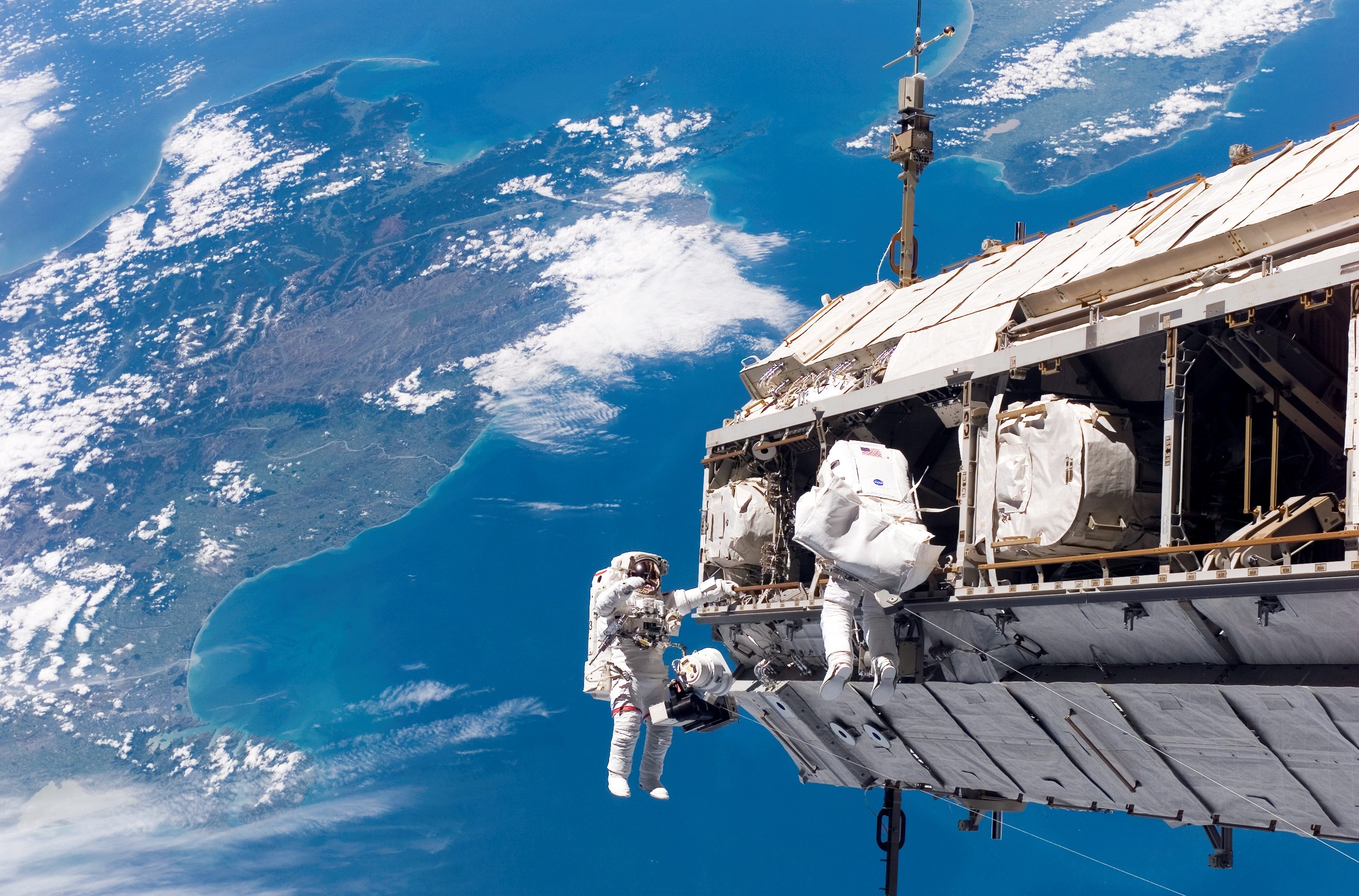Space Station Astronauts Are High on a Fresh Ice Cream Shipment
It’s not the freeze-dried stuff.

Everything you believed as a child is a lie. Your Furby doesn’t know who you are. The Tamagotchi you cherished, then killed with neglect, was never actually alive. Sea monkeys don’t look like monkeys—they’re cryptobiotic brine shrimp! And astronaut ice cream? The stuff that you made your parents buy in the museum gift shop that comes in foil packets and vanilla, raspberry, and chocolate flavors that more or less taste the same? It never actually went to space.
But there is such a thing as astronaut ice cream. As a group, these intrepid explorers, scientists, and pilots love the stuff. So they were very excited, according to NPR, when in August of 2017 a shipment of 30 individual Bluebell ice cream cups and some Snickers ice cream bars were shot up to them, 250 miles above the surface of the Earth. Let’s see Amazon Prime try that. (Patience.)
The frozen treats came as part of a usual resupply mission to the International Space Station. Some 6,400 pounds of lab equipment, supplies, and food arrived in the SpaceX Dragon capsule. The challenge for ice cream in space is storing it once it gets there. Sure, space is very cold, but you can’t hang the ice cream outside like a six-pack in a mountain stream. Astronauts have limited freezer and refrigeration space, mostly used for storing blood and urine samples—not what you want to root through in search of a popsicle. However, the supply capsule, which returns to Earth, has freezers to bring back those samples, leaving a little extra cold storage in the orbiting station.

The catch, if you want to call it that, is that the astronauts are going to need to that freezer space back, so they have to launch into a full-scale ice cream party. They have just a few weeks to empty the freezer. “It’s a really special treat, but when it gets there, they have no place to put it,” Vickie Kloeris, from NASA’s Space Food Systems Laboratory, told NPR. “It’s tough duty, but they’ll manage to eat it in the time allowed.”
There are other goodies among the supplies: citrus fruits, carrots, even a surprise avocado or two. Astronauts can live at the International Space Station for as long as a year, and when one spends that long in a confined, alien space, the psychological impact of food becomes very important. After an initial phase where astronauts were given free rein on what to eat, Kloeris and her colleagues decided to put together a standardized menu that maximizes variety and minimizes repetition. “Now,” she said, “all the managers in the space station program are aware how important it is to be sure these crew members get coffee the way they like it.”
One thing that has little psychological impact in space, however, is freeze-dried ice cream. Given the choice, it turns out, adult humans don’t really like it, especially if the real stuff is available, even occasionally. NASA did originally commission the product for one of the Apollo missions, but never made it part of the space program. “It wasn’t that popular; most of the crew really didn’t like it,” Kloeris said, in a NASA feature.
Gastro Obscura covers the world’s most wondrous food and drink.
Sign up for our email, delivered twice a week.


































Follow us on Twitter to get the latest on the world's hidden wonders.
Like us on Facebook to get the latest on the world's hidden wonders.
Follow us on Twitter Like us on Facebook